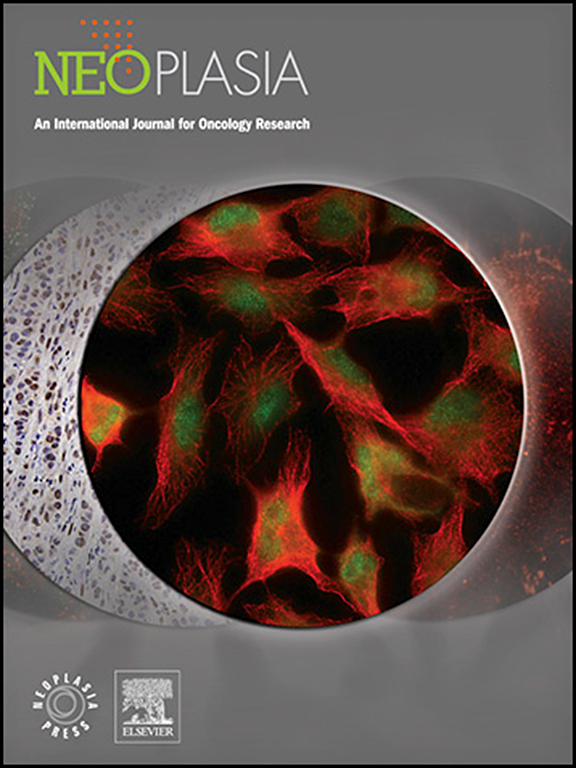Kinomic profiling to predict sunitinib response of patients with metastasized clear cell Renal Cell Carcinoma
IF 4.8
2区 医学
Q1 Biochemistry, Genetics and Molecular Biology
引用次数: 0
Abstract
Introduction
Treatment with Sunitinib, a potent multitargeted receptor tyrosine kinase inhibitor (TKI) has increased the progression-free survival (PFS) and overall-survival (OS) of patients with metastasized renal cell carcinoma (mRCC). With modest OS improvement and variable response and toxicity predictive and/or prognostic biomarkers are needed to personalize patient management: Prediction of individual TKI therapy response and resistance will increase successful treatment outcome while reducing unnecessary drug use and expense. The aim of this study was to investigate whether kinase activity analysis can predict sunitinib response and/or toxicity using tissue samples obtained from primary clear cell RCC (ccRCC) from a cohort of clinically annotated patients with mRCC receiving sunitinib as first-line treatment.
Materials and Methods
EuroTARGET partners collected ccRCC and matched normal kidney tissue samples immediately after surgery, snap-frozen and stored at -80°C until use. Phosphotyrosine-activity profiling was performed using PamChip® peptide microarrays (144 peptides derived from known phosphorylation sites in Protein Tyrosine Kinase substrates) of lysed tissue samples (5 µg protein input) of 163 mRCC patients. Evolve software Was used to analyze kinome profiles and Bionavigator was used for unsupervised and supervised clustering. The kinexus kinase predictor (www.phosphonet.ca) was used to analyze the peptide lists within the clusters.
Results
Kinome data was available from 94 patients who received sunitinib as 1st-line treatment and had complete follow-up of their clinical data (PFS, OS and toxicity) for at least 6 months. Matched normal tissue was available from 14 mRCC patients. Supervised clustering of basal kinome activity could correctly classify mRCC patients with PFS >9 months versus PFS<9 months with an accuracy of 61 %. Unsupervised hierarchical clustering revealed 3 major clusters related to immune signaling, VEGF pathway, and immune signaling/cell adhesion. Basal kinase activity levels of patients with short PFS were substantially higher compared to patients who experienced extended PFS.
Discussion/Conclusion
Based on kinase levels ccRCC tumors can be subdivided into 3 clusters which may reflect the aggressiveness of these tumors. The accuracy of response prediction of 61 % based on basal kinase levels is too low to justify implementation. STK assays may help to predict sunitinib toxicity and guide clinical management. Additionally, it is possible that mRCC patients with an immune kinase signature are better checkpoint inhibitor candidates, but this needs to be studied.
预测转移性透明细胞肾细胞癌患者舒尼替尼反应的动力学分析。
舒尼替尼是一种有效的多靶点受体酪氨酸激酶抑制剂(TKI),使用舒尼替尼治疗可以提高转移性肾细胞癌(mRCC)患者的无进展生存期(PFS)和总生存期(OS)。随着OS的适度改善和可变的反应和毒性预测和/或预后生物标志物需要个性化患者管理:预测个体TKI治疗反应和耐药性将增加成功的治疗结果,同时减少不必要的药物使用和费用。本研究的目的是研究激酶活性分析是否可以预测舒尼替尼的反应和/或毒性,使用的是一组接受舒尼替尼作为一线治疗的mRCC临床标记患者的原代透明细胞RCC (ccRCC)的组织样本。材料与方法:EuroTARGET合作伙伴术后立即采集ccRCC及匹配的正常肾组织标本,快速冷冻保存于-80℃备用。163例mRCC患者的裂解组织样本(5µg蛋白质输入)使用PamChip®肽微阵列(144条肽来自蛋白酪氨酸激酶底物的已知磷酸化位点)进行磷酸酪氨酸活性分析。使用Evolve软件分析kinome剖面,使用bionnavigator进行无监督和有监督聚类。kinexus激酶预测器(www.phosphonet.ca)用于分析簇内的肽列表。结果:94例接受舒尼替尼一线治疗的患者的Kinome数据可获得,并对其临床数据(PFS, OS和毒性)进行了至少6个月的完整随访。匹配的正常组织来自14例mRCC患者。基础kinome活性的监督聚类可以正确地将mRCC患者与PFS患者区分为10 ~ 9个月。讨论/结论:基于激酶水平,ccRCC肿瘤可以细分为3个簇,这可能反映了这些肿瘤的侵袭性。基于基础激酶水平的反应预测的准确度为61 %,太低,不足以证明实施的合理性。STK试验可以帮助预测舒尼替尼的毒性和指导临床管理。此外,具有免疫激酶特征的mRCC患者可能是更好的检查点抑制剂候选者,但这需要进一步研究。
本文章由计算机程序翻译,如有差异,请以英文原文为准。
求助全文
约1分钟内获得全文
求助全文
来源期刊

Neoplasia
医学-肿瘤学
CiteScore
9.20
自引率
2.10%
发文量
82
审稿时长
26 days
期刊介绍:
Neoplasia publishes the results of novel investigations in all areas of oncology research. The title Neoplasia was chosen to convey the journal’s breadth, which encompasses the traditional disciplines of cancer research as well as emerging fields and interdisciplinary investigations. Neoplasia is interested in studies describing new molecular and genetic findings relating to the neoplastic phenotype and in laboratory and clinical studies demonstrating creative applications of advances in the basic sciences to risk assessment, prognostic indications, detection, diagnosis, and treatment. In addition to regular Research Reports, Neoplasia also publishes Reviews and Meeting Reports. Neoplasia is committed to ensuring a thorough, fair, and rapid review and publication schedule to further its mission of serving both the scientific and clinical communities by disseminating important data and ideas in cancer research.
 求助内容:
求助内容: 应助结果提醒方式:
应助结果提醒方式:


